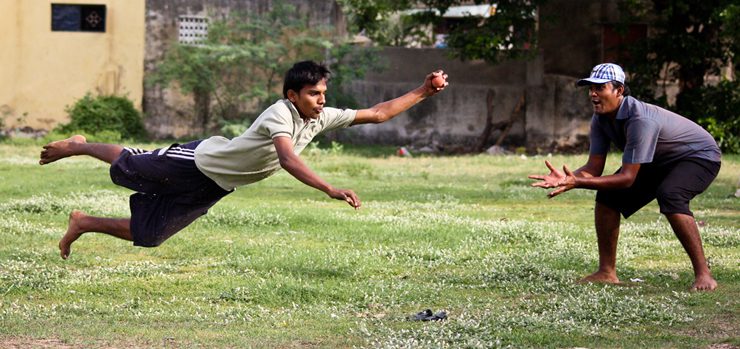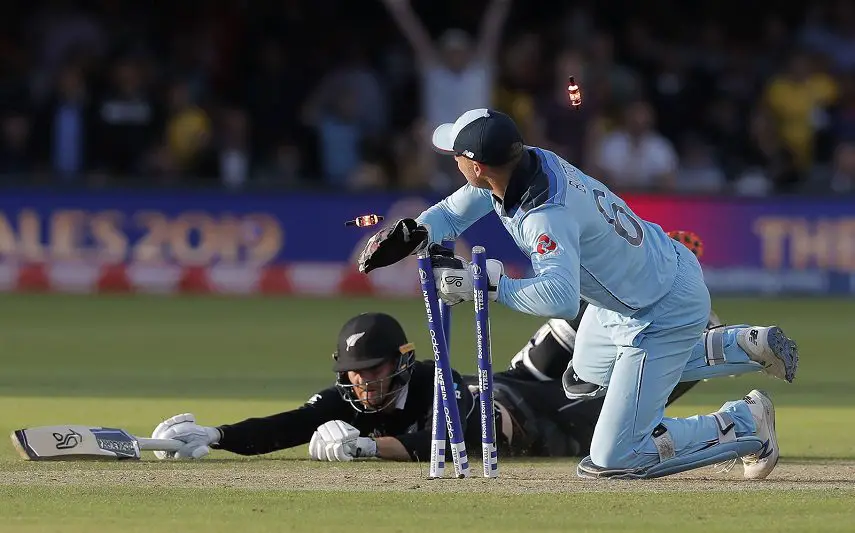Table of Contents
There are many ways of playing cricket in your garden or backyard, but gully cricket appears to be more established. Because of its rise in popularity, I thought it was time to take a closer look.
What is Gully Cricket?
Gully cricket is an unofficial form of the game that is played in many parts of Asia. It’s generally played in narrow streets and that’s where the term ‘gully’ originates from.
Gully cricket adheres to many of the original laws of the sport, but it adopts some changes in order to fit with its unusual surroundings.
Where is it Popular?
Gully cricket is played in most countries in Asia but it is especially popular in the established test playing nations of India, Pakistan, Sri Lanka and Bangladesh.
It may be seen in other parts of the region but those are the main countries where gully cricket will be played.

Required Equipment
Gully cricket is all about improvisation. The equipment that is used is similar in requirements to professional cricket, but players have to be creative.
Batters need a bat but the majority of these are homemade. Wood is a preferred material but there can be exceptions. As long as a player has an implement to hit the ball, that’s OK.
The next main piece of equipment is the ball and a tennis ball will normally be used for this. On occasions, a ball may be made by winding tape around a spherical object, but this may be more commonly seen in tape ball cricket which is something different.
Finally, we need the stumps. Remember that gully cricket is played in the street and this means hard surfaces. It’s not always possible to insert stumps into the ground and that’s why a number of objects can be used as the wicket.
Crates, oil cans, piles of books. Anything can be used within reason.
Gully Cricket Rules
The rules of gully cricket are quite informal. They are based on the laws of cricket themselves but, as long as the two captains agree ahead of the game, they can be tinkered with.
For example, the rules state that the teams should consist of 11 players a side. This is street cricket and it’s not always as straightforward as that. Sometimes, more players want to be involved while, on occasions, fewer people will be available.
The game is won and lost by scoring runs. These can be achieved by running between the wickets and through boundaries. The teams will need to agree on the specific rules on fours and sixes.
Usually, the buildings that line the gully will act as the boundary. If they are struck on the full, six runs will be scored. If the buildings are hit after the ball bounces, four runs are added to the total.
Prior to the start of the game, the two teams would agree on the number of overs to be bowled. Gully cricket is all about getting everyone involved, so it may well be the case that each bowler is allowed to send down two overs.
Batters may also be made to retire after facing two overs, in order to give their teammates a chance.
Both teams bat for their allocation of overs and, at the end of the game, the side with the most runs has won.
Ways of Getting Out
The two main modes of dismissal in gully cricket are bowled and caught. A bowled decision is upheld when the ball strikes the wicket. There may not be any bails to disturb but, as long as that wicket has been struck by the ball, the batter should be given out.
In regards to caught decisions, these can be claimed in one of two ways. If there is no contact with an external object, a clean catch can be taken without the ball touching the ground.
Some games also employ a one hand one bounce rule. If the ball is struck by the bat and it bounces, it may be possible to catch it with one hand.
LBW decisions are possible but only if there is a spare person who can be employed as an umpire. Otherwise, run outs, stumpings, hit wicket and all other regular modes of dismissal in cricket can take place.

Conclusion of Backyard Cricket
We’ve all played some form of backyard cricket in the past, so it’s interesting to see that organised games are taking place in many parts of the world. This helps to add a competitive element to those matches and gully cricket is a welcome phenomenon.
I love the fact that it’s all very informal and the rules can be adapted to each situation. There is fluidity on the number of players taking part, along with adaptation to other rules. The spirit of the original cricket laws are upheld but gully cricket gives them a twist.
It also seems like great fun – very energetic and fast moving. It’s a welcome addition to the sport and it would be nice to see forms of gully cricket expanding into other parts of the world.


